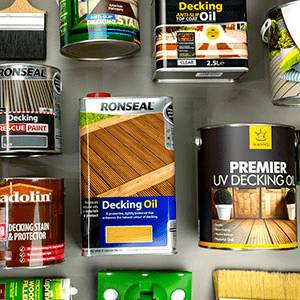Wood Wax FAQ's
Which wax product offers the clearest finish?
If you are looking for a clear finish and do not need extra durability, we can recommend two types of wax polish depending on the project you are working on: Fiddes Supreme Wax Polish in 'light clear' and Manns Classic Beeswax Polish.
What is the advantage of a wax?
A wax finish has a unique look and feel to other finishes and can make a piece of furniture or other wood look and feel like it's worth much more. It can be re-waxed as many times as you like and buffed until the required sheen level is obtained or indeed left un-buffed if a more natural low sheen look is preferred.
Do I need to strip off old wax coatings before applying a fresh wax?
Can I age or add character to Pine furniture with a wood wax?
There are a wide range of coloured or pigmented waxes that can be used to change the appearance or add character to new and old wooden furniture. Waxes such as Fiddes Supreme Wax Polish can be applied directly on to bare wood or previously waxed interior furniture. We stock a full range of furniture waxes that can be used to renew, revive, and restore wooden furniture.
Can wax be applied over varnish?
Yes. Wax can be applied over almost any other wood finish including stain, oil, varnish and paint. Although we do always recommend a test area to ensure that you are happy with the result.
Can I apply a darker wax over a light wax?
Most waxes are compatible with each other so if you want to change the appearance of a piece of furniture or other wooden surface, applying a darker wax over a clear wax or lighter coloured wax shouldn't be a problem. If applying a dark wax over a lighter colour, it's worth remembering that the lighter colour may still have an influence on the end colour. For this reason we always recommend doing a test area before starting any project. If the old wax needs to be removed, we recommend using a wax and polish remover to remove the old wax.
How can I be sure that I've removed all the wax from my doors?
When removing old coats of wax or polish with a wax and polish remover, or by sanding, we recommend that surfaces are wiped over with a damp cloth when finished. Where the water soaks in to and darkens the wood, it's fairly safe to assume that the wax and polish has been adequately removed. If there are areas where the water does not penetrate and beads on the surface, then further stripping is required. Repeat this process untill all traces of wax and polish have been removed. This process is less important if a fresh coat of wax, polish or an oil based product is being appllied to finish the wood. It is however critical if a water-based product such as a paint or varnish is being applied. Any wax or polish that remains in the wood is likely to affect the adhesion and life of any water-based top-coat.
Can I apply vanish over waxed wood.
Wax is a very versatile finish and can be applied over bare wood and most finished woods very easily, it will add some protection, lustre and shine and give an over all refreshed appearance.
However you cannot apply any other product over a wax finish. Varnishes will not adhere and oils will be prevented from penetrating the wood as it should. So I am afraid the answer to your question is no, you will need to remove the wax first and this can be done with a product such as a Woodleys Wax and Polish Remover
What if a wax isn't durable enough and I want a clear finish?
A great alternative to clear waxes are a group of products that fall in to the 'hard wax oil' category. These products are made from a blend of waxes, oils, resins and solvents to produce a product that is extremely tough and durable, perfect for high wear areas such as wooden doors, floors and furniture. Examples of clear hard wax oils include Fiddes Hard Wax Oil and Osmo Polyx Oil. The main difference between waxes and a hard wax oils is that the oils penetrate in to the surface of the wood grain giving a slightly, almost damp like appearance to the wood. Hard wax oils also enhance and draw out the natural colour of the grain more than a wax. Another alternative is clear varnishes.
Wood Wax related blog posts
- A Supreme Wax Polish For Furniture and More
- What the Pros Use - Fiddes Hard Wax Oil. How to Apply Hard Wax Oils.
Disclaimer: Whilst every attempt has been made to provide product information that is as accurate as possible, it's important to clarify that trees and the wood that they produce can be affected by many factors. For example, the same species of tree grown in the same wood, even in close proximity, will be affected by age along with the amount of sunlight and water they receive. Other naturally occurring biological and environmental factors will also influence the density and grain of the wood as well as the moisture and oil content of the timber. No two trees are the same, meaning each piece of wood has the potential to look and react differently to the same wood finish. For example, product adhesion, colour variations, absorption rates and sheen levels. It is for this reason that we always strongly recommend carrying out test areas before starting any project


